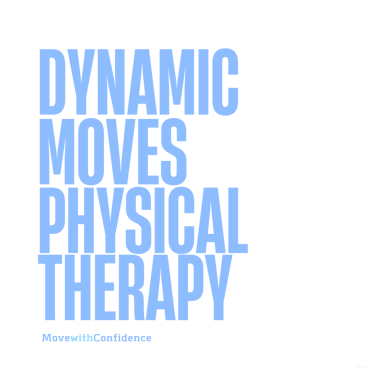Breathing Easy: How to Improve Breathing Through Physical Therapy for Patients with COPD
Learn how physical therapy can help improve breathing in patients with COPD. Discover effective techniques and exercises that can aid in managing this chronic respiratory condition.
Introduction
COPD or Chronic Obstructive Pulmonary Disease is a progressive lung disease that can make breathing difficult. Patients with COPD often experience shortness of breath, wheezing, coughing, and chest tightness, among other symptoms. These symptoms can lead to decreased quality of life, reduced mobility, and increased risk of hospitalization.
Physical therapy can be an effective treatment option for patients with COPD. Physical therapists are trained to help patients with respiratory problems improve their breathing techniques and overall respiratory function. In this article, we will discuss how to improve breathing through physical therapy for patients with COPD.
How Physical Therapy Can Help Improve Breathing for Patients with COPD
Physical therapy can help patients with COPD in various ways. A physical therapist can evaluate a patient's respiratory function and develop a personalized treatment plan that addresses their specific needs. The following are ways physical therapy can help improve breathing for patients with COPD.
Breathing Retraining
Breathing retraining is a technique used by physical therapists to help patients with COPD improve their breathing patterns. Breathing retraining involves teaching patients how to breathe more efficiently by using their diaphragm muscles. This technique helps patients breathe in more air and exhale more effectively, which can reduce shortness of breath and improve overall respiratory function.
Exercise Therapy
Exercise therapy is another technique used by physical therapists to help patients with COPD. Exercise therapy involves performing physical activities that increase heart and lung function. Physical therapists can develop exercise plans that are safe and effective for patients with COPD. Exercise therapy can improve breathing by increasing lung capacity, reducing shortness of breath, and improving overall respiratory function.
Airway Clearance Techniques
Patients with COPD often have an excessive amount of mucus in their airways, which can make breathing difficult. Physical therapists can teach patients airway clearance techniques that help remove mucus from their lungs. These techniques can include chest physical therapy, percussion, and vibration, among others. By removing excess mucus from the airways, patients can breathe more easily and reduce the risk of infections.
Breathing Devices
Physical therapists can also prescribe breathing devices to patients with COPD. Breathing devices such as a nebulizer, inhaler, or oxygen tank can help improve breathing and increase oxygen levels in the blood. These devices can also help reduce shortness of breath and improve overall respiratory function.
Techniques and Exercises to Improve Breathing for Patients with COPD
Physical therapists can teach patients with COPD various techniques and exercises that can help improve their breathing. The following are techniques and exercises that patients can perform at home to improve their breathing.
Diaphragmatic Breathing
Diaphragmatic breathing is a technique that involves using the diaphragm muscles to breathe. This technique can help increase oxygen levels in the blood, reduce shortness of breath, and improve overall respiratory function. To perform diaphragmatic breathing, follow these steps:
Lie on your back with your knees bent and your feet flat on the floor.
Place your hands on your stomach.
Inhale slowly through your nose, and feel your stomach rise.
Exhale slowly through your mouth, and feel your stomach fall.
Pursed Lip Breathing
Pursed lip breathing is a technique that can help reduce shortness of breath and improve breathing patterns. To perform pursed lip breathing, follow these steps:
Inhale slowly through your nose for two seconds.
Pucker your lips as if you were going to whistle.
Exhale slowly and steadily through your pursed lips for four seconds.
Segmental Breathing
Segmental breathing is a technique that involves breathing into different segments of the lungs. This technique can help increase lung capacity, improve breathing patterns, and reduce shortness of breath. To perform segmental breathing, follow these steps:
Sit in a comfortable position with your feet flat on the floor.
Place your hands on your chest and belly.
Breathe in deeply through your nose and fill your lungs with air.
Hold your breath for a few seconds.
Exhale slowly through your mouth and feel your chest and belly fall.
Inspiratory Muscle Training
Inspiratory muscle training is a type of exercise that involves strengthening the muscles used for breathing. This technique can help increase respiratory muscle strength, reduce shortness of breath, and improve overall respiratory function. To perform inspiratory muscle training, follow these steps:
Sit in a comfortable position with your back straight.
Place a small resistance device, such as a mouthpiece or a handheld device, in your mouth.
Inhale deeply through the device, and hold your breath for a few seconds.
Exhale slowly through your mouth.
FAQs
Q)Can physical therapy cure COPD?
Physical therapy cannot cure COPD, but it can help manage symptoms and improve respiratory function.
Q)Is physical therapy safe for patients with COPD?
Physical therapy is safe for patients with COPD when performed by a licensed physical therapist.
Q)Can breathing exercises worsen COPD symptoms?
Breathing exercises should be performed under the guidance of a licensed physical therapist to prevent exacerbation of symptoms.
Conclusion
COPD can be a challenging condition to manage, but physical therapy can help improve breathing and quality of life for patients with COPD. Physical therapists can develop personalized treatment plans that address a patient's specific needs, including breathing retraining, exercise therapy, airway clearance techniques, and breathing devices. Patients can also perform various techniques and exercises at home to improve their breathing, including diaphragmatic breathing, pursed lip breathing, segmental breathing, and inspiratory muscle training. With the help of physical therapy, patients with COPD can breathe easier and enjoy a better quality of life.

